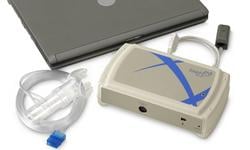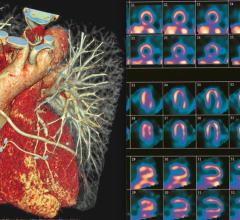
February 23, 2010 – Shortness of breath, or dypsnea, can arise from a number of anatomical and physiological causes and a new device can measure a patient's physiology in a six-minute test. The Shape-HF device helps physicians identify the predominant source of shortness of breath, primarily the heart or lungs.
"Shortness of breath is a fear of most patients and it's what brings them to see me initially," said Myron Licht, M.D., an interventional cardiologist at the Apex Heart Care clinic in Arizona. "In cardiology, doctors have relied on chest X-rays, stress tests, CAT scans and MRIs. Using the Shape-HF is the next logical step, or paradigm shift, in better understanding heart failure and cardiopulmonary disease because it provides objective information – primal physiology markers – about a patient's condition."
In addition to defining a patient's physiological limitation, the Shape-HF also measures responses to pharmacotherapy and cardiac resynchronization therapy and unmasks exercise-induced changes in pulmonary vasculature. Patients can take the test with minimal exertion on a low-grade, low-intensity treadmill or step stool.
Dr. Licht uses his Shape-HF to measure patients with a variety of heart and lung ailments including heart failure, heart shunts, chronic obstructive pulmonary disease, pulmonary hypertension, and even a double lung transplant.
He recently saw a patient who was concerned about shortness of breath and sleep apnea. The patient had lost a significant amount of weight a year ago and currently weighs about 300 pounds. "Some might conclude that this patient needs to lose more weight before running any tests," said Dr. Licht. "When he concluded the Shape-HF test, we learned he had underlying problems related to cardiopulmonary hypertension, a serious health concern and something that may have been overlooked."
The Shape-HF results correlate to the New York Heart Association Classification values and because the test is easy to conduct, for both the patient and the physician, tests can be conducted regularly to track a patient's progress and assess patient risk for a cardiac event or hospitalization. "This device let's me see what cardiopulmonary shape my patients are in so I can accurately treat them and keep them from being readmitted to the hospital," said Dr. Licht.
For more information: www.shapemedsystems.com


 January 23, 2024
January 23, 2024 








